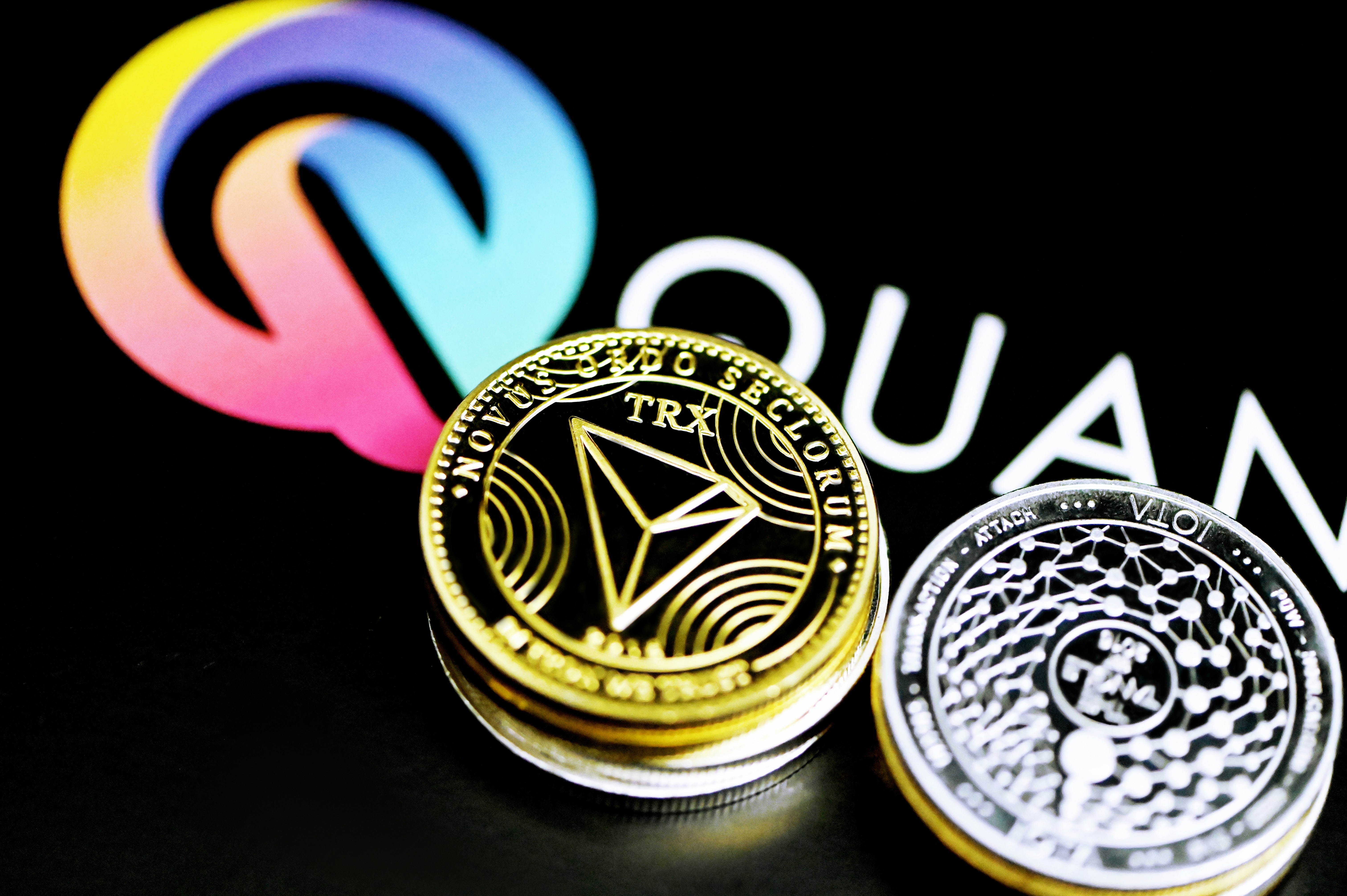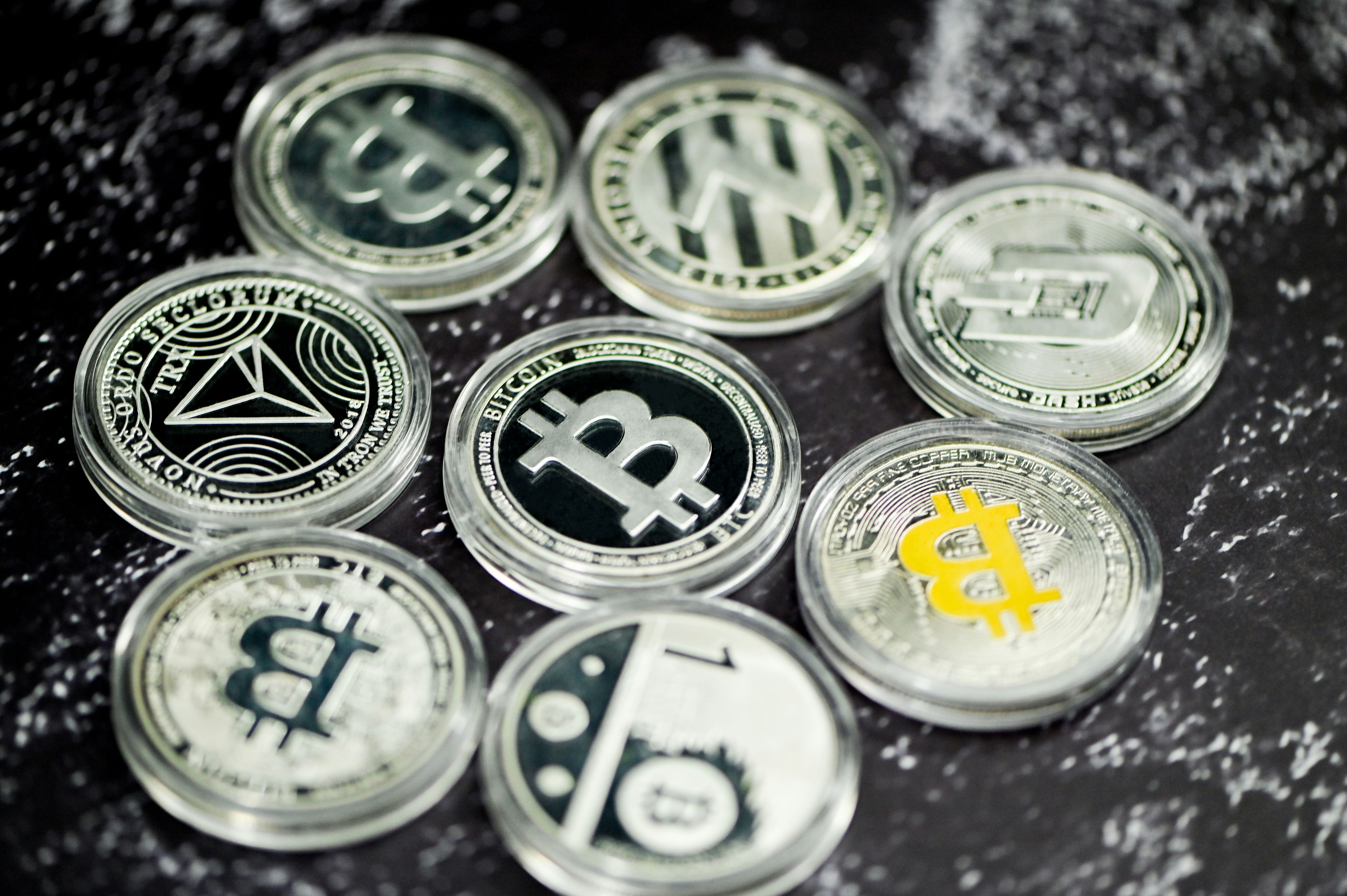So you've heard about the potential benefits of investing in a gold IRA, but now you're wondering, what about the risks? Well, worry not, because in this article, we're going to explore the potential risks associated with a gold IRA. As with any investment, it's important to have a clear understanding of the potential downsides to make informed decisions. Whether you're a seasoned investor or just getting started, this article will provide you with valuable insights to help you navigate the potential risks of a gold IRA. Let's dive in!
Understanding Gold IRAs
A Gold IRA, or Individual Retirement Account, is a retirement investment vehicle that allows you to hold physical gold in your account. Unlike traditional IRAs, which typically hold stocks, bonds, or mutual funds, a Gold IRA focuses solely on precious metals. The main purpose of a Gold IRA is to provide a hedge against inflation and diversify your retirement portfolio.
Definition of a Gold IRA
A Gold IRA is a self-directed IRA that allows you to invest in physical gold, such as gold bars or coins, as well as other precious metals like silver, platinum, and palladium. The gold is held in a secure depository on your behalf, and it is managed by a custodian who specializes in precious metal investments.
How a Gold IRA Operates
When you open a Gold IRA, you will need to find a reputable custodian who specializes in precious metal investments. The custodian will assist you in setting up the account and transferring funds from your existing retirement account. Once the funds are transferred, you can use them to purchase physical gold, which will be stored in a secure depository.
Unlike traditional IRAs, where you may need to rely on a financial institution to hold your assets, a Gold IRA allows you to have direct ownership of physical gold. You can choose between various forms of gold, such as coins or bars, and you have the freedom to buy or sell your gold investments as you see fit. The value of your Gold IRA will fluctuate based on the current market price of gold.
Comparison between Gold IRA and Traditional IRA
One of the main differences between a Gold IRA and a traditional IRA is the type of assets held within the account. While traditional IRAs typically consist of stocks, bonds, and mutual funds, a Gold IRA focuses solely on precious metals. This key difference allows a Gold IRA to provide a unique set of benefits and risks compared to a traditional IRA.
Gold IRAs are known for their ability to act as a hedge against inflation and economic uncertainty. While traditional investments are subject to market fluctuations, the value of gold tends to remain relatively stable and can even increase during times of economic downturn. This stability can help protect your retirement savings from erosion due to inflation.
However, it's important to note that gold investments do not generate income like stocks or bonds. The value of your Gold IRA will depend solely on the price of gold, and you will not receive dividends or interest payments. This lack of income can be a disadvantage for those who rely on their retirement accounts to generate regular cash flow.

Front-End Sales Loads
When considering a Gold IRA, it's essential to understand the concept of front-end sales loads and their impact on your investment. Front-end sales loads refer to the fees that are charged at the time of purchasing gold or any other investment. These fees typically cover commissions for brokers or salespeople involved in the transaction.
Explanation of Front-End Sales Loads
Front-end sales loads are expressed as a percentage of the investment amount and can range from 1% to 8% or more. For example, if you invest $10,000 in gold and the front-end sales load is 5%, you would pay $500 in fees. These fees are deducted from your initial investment and can affect the overall performance of your Gold IRA.
Impact on Investment
Front-end sales loads can have a significant impact on the long-term performance of your Gold IRA. If you incur high fees when purchasing gold, it may take longer for your investment to break even and start generating positive returns. Additionally, if you decide to sell your gold in the future, you would need to consider any potential front-end sales loads on the sale transaction as well.
To mitigate the impact of front-end sales loads, it's crucial to research and compare custodians and dealers that offer competitive fees. By choosing a custodian with lower fees, you can maximize the potential growth of your Gold IRA and minimize the impact of fees on your overall investment.
Storage Challenges
Owning physical gold comes with its own set of challenges, primarily related to storage. Unlike traditional investments, which can be held electronically in brokerage accounts, physical gold requires secure storage to ensure its safety and preservation.
Requirements for Gold Storage
To store your gold safely, you will need to find a reputable depository or storage facility that specializes in precious metals. These facilities are equipped with advanced security systems, including video surveillance, armed guards, and secure vaults. The storage facility should be insured to protect against theft, damage, or any unforeseen events.
It's important to note that you cannot store the gold from your Gold IRA at home or in a personal safe. The Internal Revenue Service (IRS) regulations require that the gold be held in a third-party storage facility to maintain the tax advantages of the Gold IRA.
Cost Implications of Storage
Storing physical gold in a secure facility comes with associated costs. The storage fees are typically based on the value and quantity of gold being stored. The average cost can range from 0.5% to 1.5% of the value of the stored gold per year.
While these storage fees may seem significant, they are necessary to ensure the safety and security of your gold investments. It's important to factor in these costs when evaluating the overall performance and profitability of your Gold IRA.
Risks Related to Gold Storage
Despite the measures taken by storage facilities to ensure security, there are inherent risks associated with storing physical gold. While the risk of theft can be minimized through sophisticated security systems, there is always a small chance of a security breach. Additionally, natural disasters, such as fires or floods, can pose a threat to the integrity of the storage facility and your gold investments.
To mitigate these risks, it's crucial to choose a reputable storage facility that has a proven track record in the industry. Look for facilities that have stringent security protocols, insurance coverage, and regular audits to ensure the safety of your gold.
Fluctuations in Gold Prices
Gold prices are subject to constant fluctuations due to various factors. Understanding what influences gold prices and the role of market volatility is essential when considering a Gold IRA investment.
What Influences Gold Prices
Several factors can impact the price of gold, including supply and demand dynamics, economic indicators, geopolitical events, and investor sentiment. Changes in any of these factors can cause significant fluctuations in gold prices. For example, if there is a decrease in global economic stability or an increase in inflation, investors tend to flock to gold as a safe-haven asset, driving up its price.
Role of Market Volatility in Gold Pricing
Market volatility plays a crucial role in determining the price of gold. When global markets experience significant swings, investors often seek safe-haven assets to protect their investments. Gold, with its historical stability, is often seen as a reliable option during times of market turbulence. As a result, increased market volatility can lead to higher demand for gold, driving up its price.
Impact of Gold Price Fluctuations on the Value of Gold IRA
The value of your Gold IRA is directly impacted by fluctuations in gold prices. When gold prices rise, the value of your Gold IRA increases, potentially resulting in higher returns. On the other hand, if gold prices decline, the value of your Gold IRA may decrease, leading to potential losses.
It's important to note that the impact of gold price fluctuations on your Gold IRA will depend on the overall diversification of your retirement portfolio. If you have a significant portion of your portfolio invested in gold, the fluctuations in gold prices may have a more substantial impact. Diversifying your investments across different asset classes can help mitigate this risk.
Regulatory Risks
Gold IRAs are subject to specific regulations set by the Internal Revenue Service (IRS) and other governing bodies. Understanding the regulatory environment of Gold IRAs and any potential changes in regulations can help you make informed investment decisions.
Understanding the Regulatory Environment of Gold IRAs
The IRS has specific guidelines and regulations governing the establishment and management of Gold IRAs. These regulations outline the eligibility criteria, contribution limits, withdrawal rules, and tax treatment of Gold IRAs. It's crucial to familiarize yourself with these regulations to ensure compliance and to maximize the tax benefits associated with a Gold IRA.
Potential Changes in Regulations Impacting Gold IRAs
Regulatory changes can have an impact on the viability and profitability of Gold IRAs. It's essential to stay informed about any potential changes in regulations that may affect your Gold IRA investment. Changes in tax laws, eligibility rules, or withdrawal restrictions could significantly impact the value and benefits of your Gold IRA.
It's advisable to consult with a qualified tax professional or financial advisor who specializes in retirement accounts to stay abreast of any regulatory changes and understand their potential implications for your Gold IRA.
Liquidity Concerns
Liquidity refers to the ease with which an asset can be converted into cash. When considering a Gold IRA, it's essential to understand the liquidity of your gold investments and any risks associated with converting gold into cash.
Understanding Liquidity
Physical gold is not as liquid as other financial investments, such as stocks or bonds. While gold can be sold relatively quickly, the process of converting gold into cash may take more time and effort. Factors such as finding a buyer, negotiating a price, and completing the transaction can all impact the liquidity of your gold investments.
Risks Associated with the Conversion of Gold into Cash
The process of converting gold into cash carries inherent risks. The price of gold is subject to constant fluctuations, and delays in selling your gold could result in missed profit opportunities. Additionally, the liquidity of your gold investments may be affected by market conditions, demand for gold, and the availability of buyers.
It's important to consider your liquidity needs and potential risks when deciding to invest in a Gold IRA. If you anticipate needing quick access to cash in your retirement account, it may be wise to evaluate the liquidity of your gold investments and consider other more liquid assets as part of your retirement portfolio.
Impact of Liquidity on Gold IRA Investment
The liquidity of your gold investments can impact the overall performance and suitability of a Gold IRA for your retirement goals. If you require immediate access to cash and cannot afford to wait for the sale of your gold, a Gold IRA may not be the best option for you. However, if you have a long-term investment horizon and are willing to hold your gold investments for an extended period, the liquidity concerns may be mitigated.
Before investing in a Gold IRA, it's essential to evaluate your liquidity needs, consider your retirement timeline, and assess your risk tolerance. A balanced approach to retirement planning can help ensure that you have the flexibility and access to cash you need while also benefiting from the potential long-term growth of your gold investments.
Risks Associated with Fraudulent Dealers
The gold market, like any other investment market, is not immune to fraudulent activities. Understanding the prevalence of fraudulent dealers, their potential impact on Gold IRAs, and how to identify potentially fraudulent dealers is crucial when considering precious metal investments.
Prevalence of Fraudulent Dealers in the Gold Market
Unfortunately, there are fraudulent dealers and scam artists operating in the gold market. These individuals or organizations may engage in deceptive practices, such as selling counterfeit or overpriced gold, misrepresenting the quality or purity of the gold, or failing to deliver the purchased gold altogether.
It's important to be cautious and conduct thorough research before engaging with any dealer or custodian. Look for established and reputable dealers who have a track record of delivering high-quality gold and providing transparent services.
How Fraudulent Activities can Affect Gold IRA
Engaging with a fraudulent dealer can have severe consequences for your Gold IRA. If you unknowingly purchase counterfeit or overpriced gold, it can lead to a significant loss of capital. Additionally, failing to receive the purchased gold can result in the IRS considering the transaction a distribution, potentially triggering taxes and penalties.
To protect your Gold IRA from fraudulent activities, choose a custodian or dealer who is regulated and has a solid reputation in the industry. You can also consult with independent third-party organizations or check online reviews to verify the legitimacy of a dealer or custodian.
How to Identify Potentially Fraudulent Dealers
There are several red flags that may indicate a potentially fraudulent dealer. These include:
- Lack of transparency: Dealers who are unwilling to provide detailed information about their operations, storage facilities, or gold sourcing should raise concerns.
- Unrealistic promises: Be cautious of dealers promising unusually high returns or excessively low prices for gold. If it sounds too good to be true, it probably is.
- Poor customer reviews: Online reviews and customer feedback can provide valuable insights into the credibility and reputation of a dealer. Negative reviews or numerous customer complaints should be taken seriously.
- Lack of regulation or accreditation: Reputable dealers typically comply with industry regulations and may hold certifications or affiliations with recognized organizations. Ensure that the dealer or custodian you choose is properly regulated.
By conducting thorough due diligence and seeking out reputable dealers, you can minimize the risk of falling victim to fraudulent activities and ensure the integrity of your Gold IRA.
Tax Considerations
Understanding the tax treatment of Gold IRAs and potential tax risks is essential for maximizing the benefits of your investment and avoiding unexpected tax liabilities.
Tax Treatment of Gold IRAs
Gold IRAs, like other types of IRAs, offer certain tax advantages. Contributions made to a Gold IRA are typically tax-deductible, meaning they can be deducted from your taxable income in the year they are made. This can help reduce your overall tax liability and potentially increase your retirement savings.
Additionally, the growth of your Gold IRA is tax-deferred, meaning you won't have to pay taxes on any capital gains, dividends, or interest earned within the account until you start making withdrawals in retirement. This deferral allows your investments to compound over time, potentially resulting in greater growth.
Potential Tax Risks
While Gold IRAs offer tax advantages, it's important to be aware of potential tax risks. Failure to comply with IRS regulations regarding Gold IRAs can lead to substantial tax penalties and the loss of tax benefits.
Some potential tax risks associated with Gold IRAs include:
- Early withdrawal penalties: If you withdraw funds from your Gold IRA before the age of 59 ½, you may be subject to early withdrawal penalties, in addition to regular income taxes.
- Required minimum distributions (RMDs): Once you reach the age of 72, the IRS requires you to start taking minimum distributions from your Gold IRA. Failure to take these distributions can result in significant tax penalties.
- Prohibited transactions: Engaging in certain prohibited transactions within your Gold IRA, such as using the gold for personal use or investing in collectibles, can result in the IRS considering the transaction as a distribution, subjecting it to taxes and penalties.
To minimize tax risks, it's crucial to understand and comply with IRS regulations regarding Gold IRAs. Consult with a qualified tax professional or financial advisor to ensure you are aware of any potential tax implications and to develop a strategy that aligns with your retirement goals.
Responsibilities and Fees of Custodians
When investing in a Gold IRA, you will work with a custodian who specializes in precious metal investments. Understanding the role and responsibilities of custodians, as well as associated fees, is essential when evaluating the potential risks and benefits of a Gold IRA.
Role and Responsibilities of Gold IRA Custodians
Gold IRA custodians act as intermediaries between you, as the investor, and the IRS. Their main responsibilities include maintaining the proper records and documentation required for compliance with IRS regulations, facilitating transactions, and ensuring the safe storage of your physical gold.
Custodians are responsible for verifying the authenticity and quality of the gold purchased for your Gold IRA. They will also provide periodic statements or reports on the status and value of your Gold IRA, keeping you informed about the performance of your investment.
Potential Risks Related to Custodians
While custodians play a crucial role in facilitating and safeguarding your Gold IRA, there are potential risks associated with their services. These risks include:
- Lack of regulation: Not all custodians are regulated by the government or independent organizations. Choosing an unregulated custodian can expose you to a higher risk of fraudulent activities or poor service quality.
- Financial stability: Custodians may be subject to financial risks or insolvency. It's important to choose a custodian with a strong financial standing and a proven track record in the industry.
- Limited investment options: Some custodians may restrict the types of gold or precious metals you can invest in, limiting your diversification opportunities. Ensure that the custodian you choose offers a wide range of investment options that align with your investment goals.
To mitigate these risks, it's crucial to thoroughly research and evaluate potential custodians. Look for custodians that are regulated, have a strong financial position, and offer a wide variety of investment options.
Custodian Fees and their Impact on Gold IRA
Custodians charge fees for their services, which can impact the overall performance and profitability of your Gold IRA. These fees can include account setup fees, annual maintenance fees, storage fees, and transaction fees.
It's important to understand the fee structure and compare costs among different custodians. Lower fees can help maximize the growth potential of your Gold IRA over the long term, while excessive fees may erode your investment returns.
When evaluating custodian fees, consider the overall value that the custodian provides in terms of security, services, and reputation. A lower fee may not always be the best option if it compromises the quality of service or the safety of your gold investments.
Risks related to Global Economic and Political Factors
Gold is often considered a safe-haven asset during times of economic instability or geopolitical tensions. Understanding the impact of economic and political factors on gold prices and the potential implications for your Gold IRA is essential when assessing risk.
Impact of Economic Instability on Gold Prices
Economic instability, such as recessions, financial crises, or currency fluctuations, can significantly impact gold prices. During periods of economic uncertainty, investors tend to seek safe-haven assets like gold to protect their wealth. This increased demand often results in higher gold prices.
However, economic stability can also contribute to lower gold prices. When the economy is thriving, investors may shift their focus to riskier assets, such as stocks or real estate, leading to decreased demand for gold.
Effect of Political Unrest or Changes on Gold IRA
Political unrest or changes in government can also influence gold prices. Unstable political environments or geopolitical tensions often contribute to a higher risk perception among investors, leading them to allocate more of their investments to safe-haven assets like gold. As a result, gold prices tend to rise during times of political uncertainty.
On the other hand, periods of political stability can have the opposite effect on gold prices. Investors may feel more confident in the economy and allocate their funds to riskier investments, causing gold prices to decline.
Role of Global Economic Events in Shaping the Gold Market
Global economic events, such as interest rate changes, central bank policies, or trade agreements, can have a significant impact on the gold market. These events can affect investor sentiment, currency values, and inflation rates, ultimately influencing the demand for and price of gold.
To assess the potential risks related to economic and political factors, it's important to stay informed about global events and trends that may impact gold prices. Monitor economic indicators, political developments, and the overall sentiment of the market to make informed decisions regarding your Gold IRA.
In conclusion, investing in a Gold IRA can offer unique benefits, but it also comes with its share of risks. Understanding and evaluating these risks is crucial to make informed investment decisions and protect your retirement savings. By considering factors such as storage requirements, gold price fluctuations, regulatory risks, liquidity concerns, fraudulent dealers, tax considerations, custodian responsibilities, and global economic factors, you can navigate the world of Gold IRAs with confidence.





